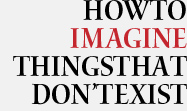2014
Leigh Orpaz
Far from the ecstatic images that we might associate with a night out, the depersonalised, black-and-white figures that form the dancing crowd in Leigh Orpaz’s video Breakfast resemble the living dead: eyes glowing, faces flattened and heads nodding zombie-like, their movements disjointed from the unsettling electronic music that fills the exhibition space. Pulsating drones and reverberating bass tones create a sense of suspense, accentuated by the mechanical panning of the camera, resulting in images reminiscent of surveillance footage. Indifferent to the gaze that scrutinises each of their movements, however, the dancers appear unperturbed by their exposure and vulnerability to the technologies of control that surround them – the images were in fact filmed using an infrared camera, a recording device sensitive to temperature rather than light and often used for military purposes. By turning this observational tool towards a familiar scene at the Tel Aviv nightclub after which the video is titled, Orpaz imbues these images with a sense of threat that never quite materialises.

A similarly eerie atmosphere inflects other of Orpaz’s photographs and videos. Her carefully staged portraits of young women riff on clichés that border on kitsch: a girl watching the snow fall, a teenager standing under a spotlight, a lone dancer embracing a bear. And yet through subtle alterations of lighting and sound, Orpaz lends these stereotypical depictions of adolescence a sense of unease, reflecting upon the paradoxical exhaustion of images at a time of surfeit visual production.

Other videos undo the symbolism of the road as a site of adventure, often capturing the viewer in a phantasmatic limbo of sorts, much like the cavernous dance floor in Breakfast. The narrative suspended, what remains in Orpaz’s work is a lingering impression of latent hostility, and the daunting uncertainty of not quite knowing whether affects produce images or vice versa. – HV




